Plum trees are widely grown across the world as they are valued for the deliciously sweet and juicy fruit they produce. There’s nothing better than picking and eating a fresh ripe plum…
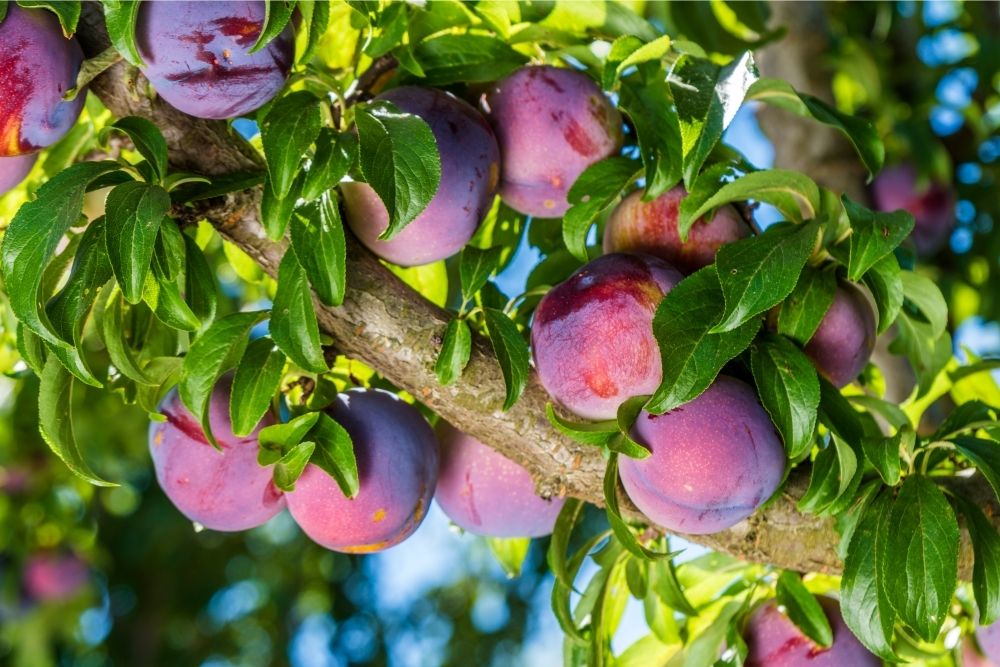
Plums are widely consumed and sold in supermarkets. However, it’s fair to say that we are only exposed to a few select variations of plums. However, there are so many varieties available out in the world. Some weird, some wonderful.
This article will explore the beauty of the plum world sharing the broad variety of colors and flavors by taking a look at some of the most amazing plum trees.
1. The Czar Tree
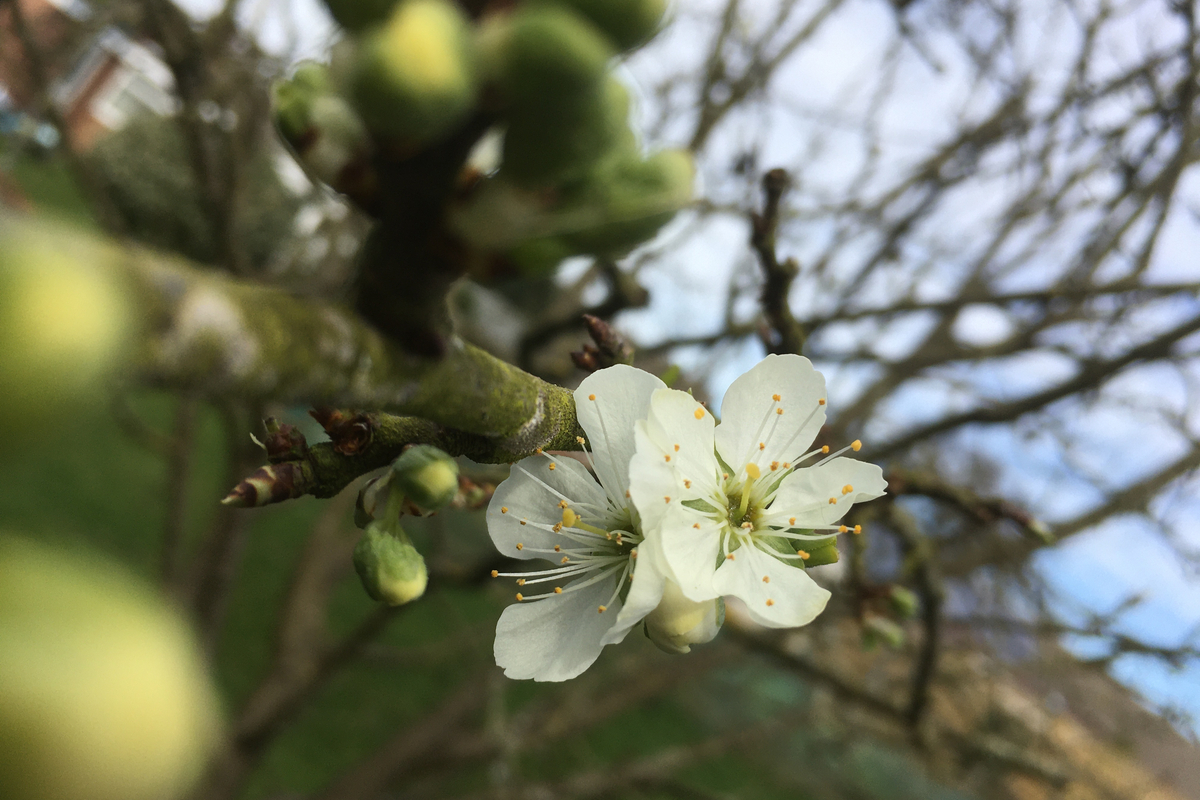
The Czar plum tree is native to the UK, however, its name was given in honor of the Russian Czar, Alexander the second. The Czar tree is classified as a cultivated species of the common plum tree.
The tree is relatively hardy as it can grow in a variety of soils and grows effectively in numerous weather conditions. It is recognized for the sweet deep red-purple fruit it bears that can be found growing in grape-like clusters on the tree’s branches.
The czar plum is commonly used for culinary purposes due to its sweet flavor making it an ideal ingredient for baking.
2. The Coe’s Golden Drop Tree
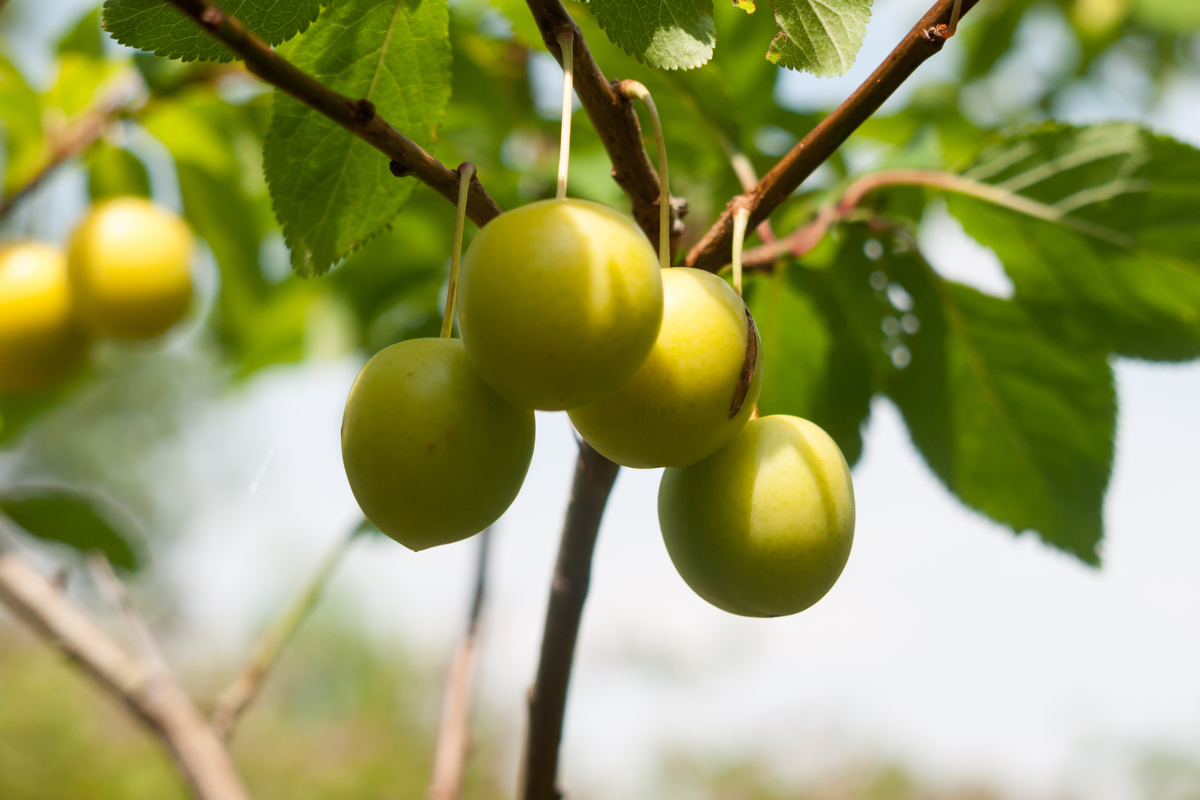
The Coe’s golden drop tree is widely popular across Europe as a popular garden plant. The tree’s name derives from the golden-colored drupes that are produced by the tree. The fruit the tree bears is recognized for its rich sweetness that is said to be similar to the flavor of the greengage plum.
The Coe’s golden drop tree is considered to be a relatively hardy tree that thrives in moist and well-drained soil.
3. Mirabelle Plum Tree
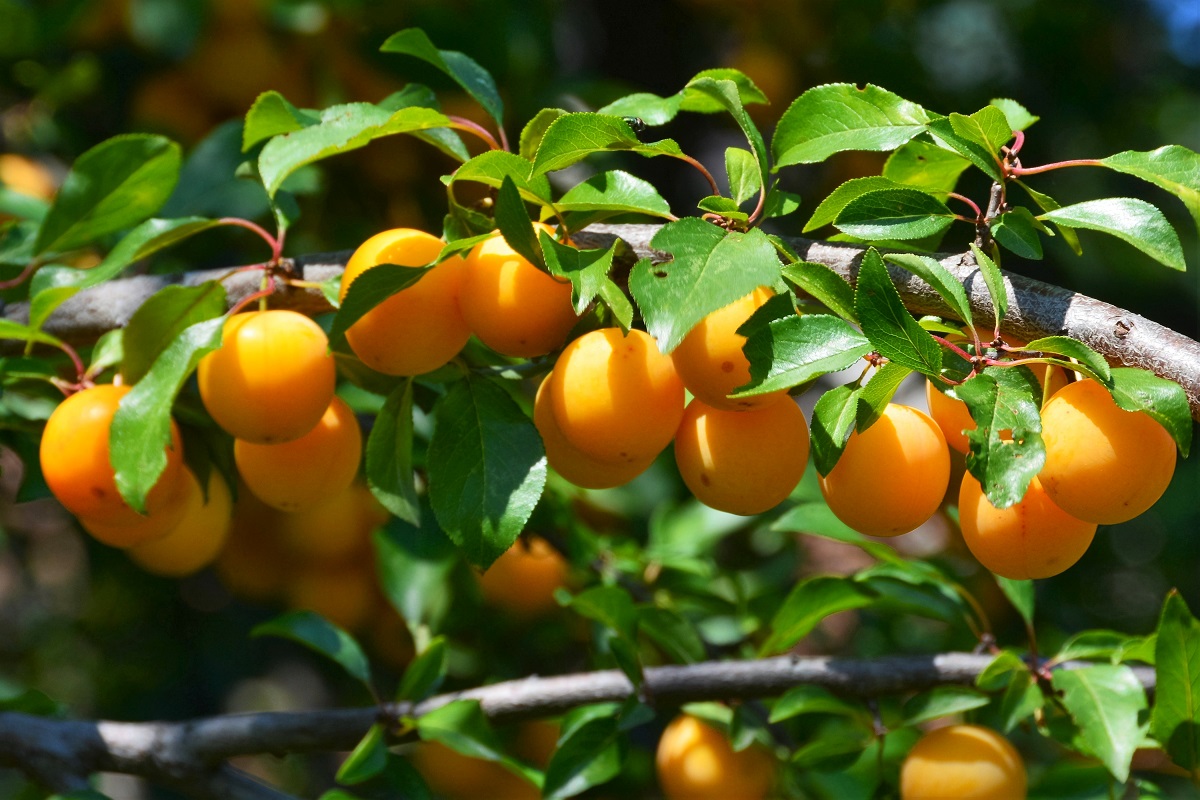
The mirabelle plum tree, also known as the cherry plum tree, is a cultivated variety of plum trees that are said to originate from Asia. The Mirabelle tree is recognized for the sweet and juicy fruit it bears. The mirabelle plum is classified as a drupe.
It can be distinguished from other plums by its oval shape and orange-yellow skin and flesh. The Mirabelle fruit is widely grown and valued for its sweet rich flavor. Mirabelle plums are most commonly used for culinary purposes and making wine.
RELATED: Sweet As Sugar: 16 Different Types Of Sugar Plum Trees
4. Damson Tree
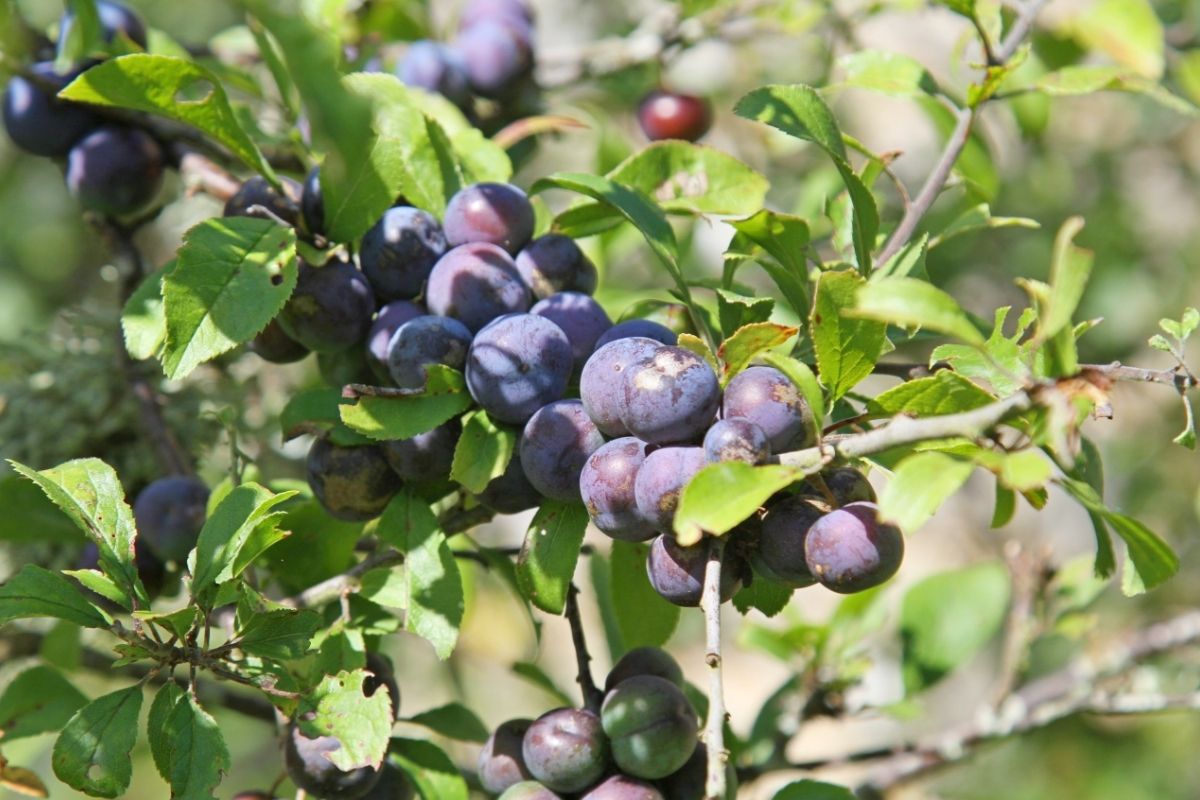
The damson tree is one of the most popular plum trees around, recognized for its delicious sweetness and sharp tartness. The damson tree is classified as a member of the myrtle family and is a subspecies of the plum tree.
The damson tree’s fruit can be recognized by its unique ovoid shape, deep indigo dusty skin, and yellow-green flesh. The damson tree can most commonly be found growing across Europe.
5. Prune Plum Tree
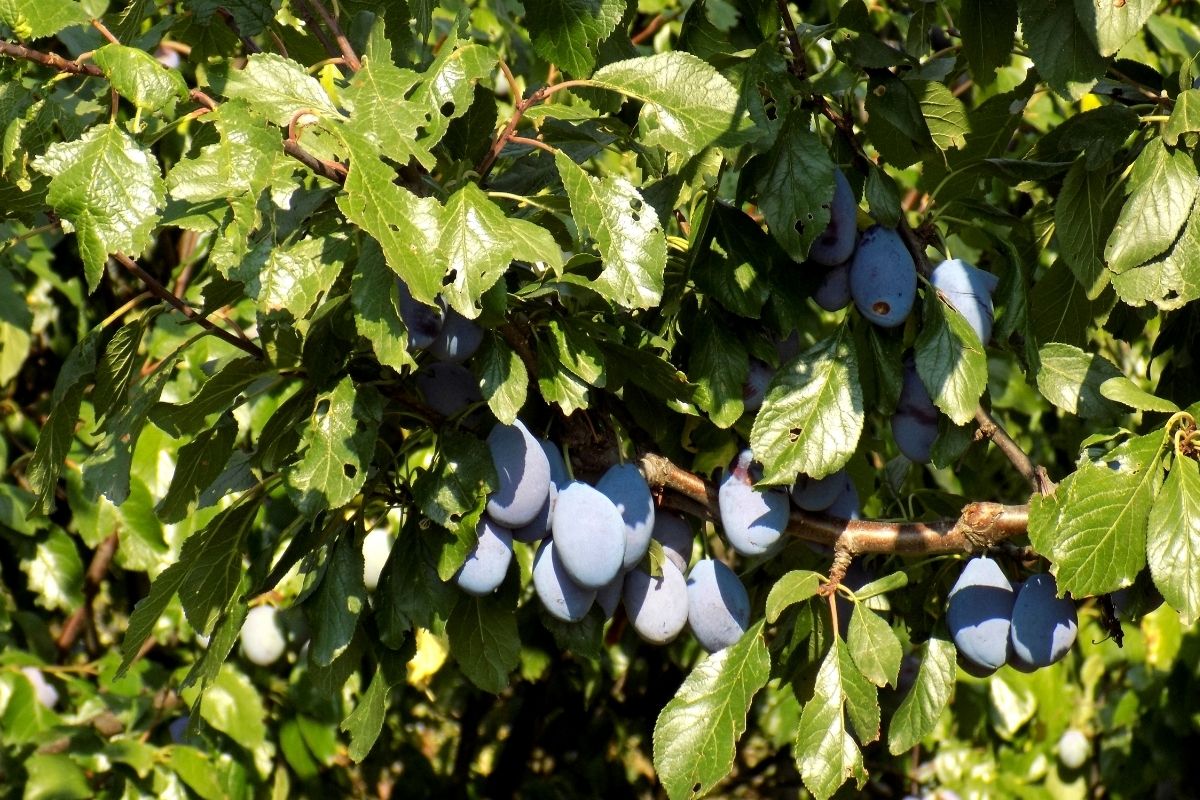
The prune plum tree is classified as a fruit-bearing tree that is characterized as a subspecies of the European plum. The prune plum tree is relatively small, growing up to 10 meters in height. The tree is recognized for the freestone fruit it bears known as the prune plum fruit.
Its fruit is said to bear resemblance to the damson plum in its appearance and flavor. Besides its fruit, the prune plum tree is also harvested for its wood as it consists of a unique red-brown color that is valued as an attractive wood for making furniture.
6. Greengage Tree
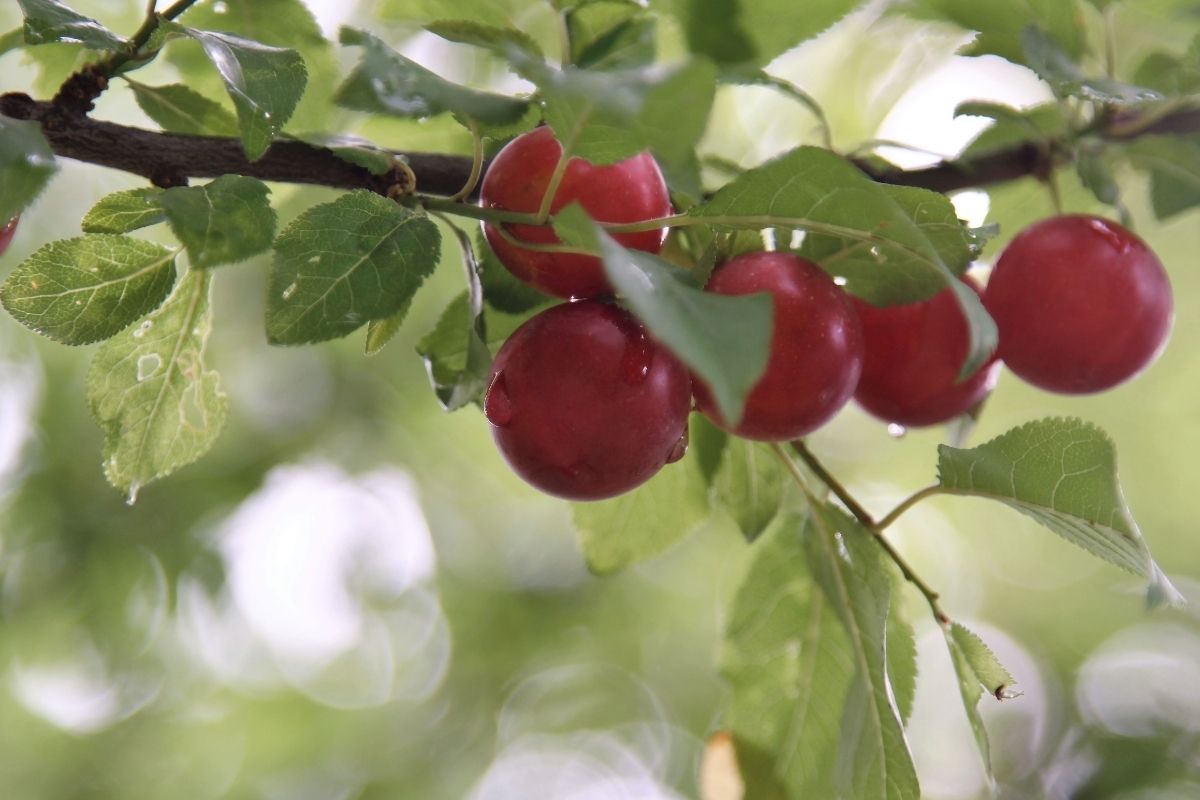
Though native to the Middle East, the greengage plum trees can most commonly be found growing across western Europe. The trees are recognized for the fruit they bear. Greengage fruit is distinct in its appearance with its green dusty skin and bright green flesh.
Greengage trees thrive in temperate conditions. Grown in the right conditions, the greenage tree produces sweet floral plums that are commonly used for culinary purposes.
7. Victoria Plum Tree

The Victoria plum tree is classified as a self-fertile fruiting tree that is most commonly harvested for its red oval drupe fruit which can be eaten fresh or used for culinary purposes.
The Victoria plum tree is a small tree that grows to about 4 meters tall. It is also classified as a slow-growing tree as it takes between 5 to 10 years to reach maturity.
8. Laxton’s Delight Tree
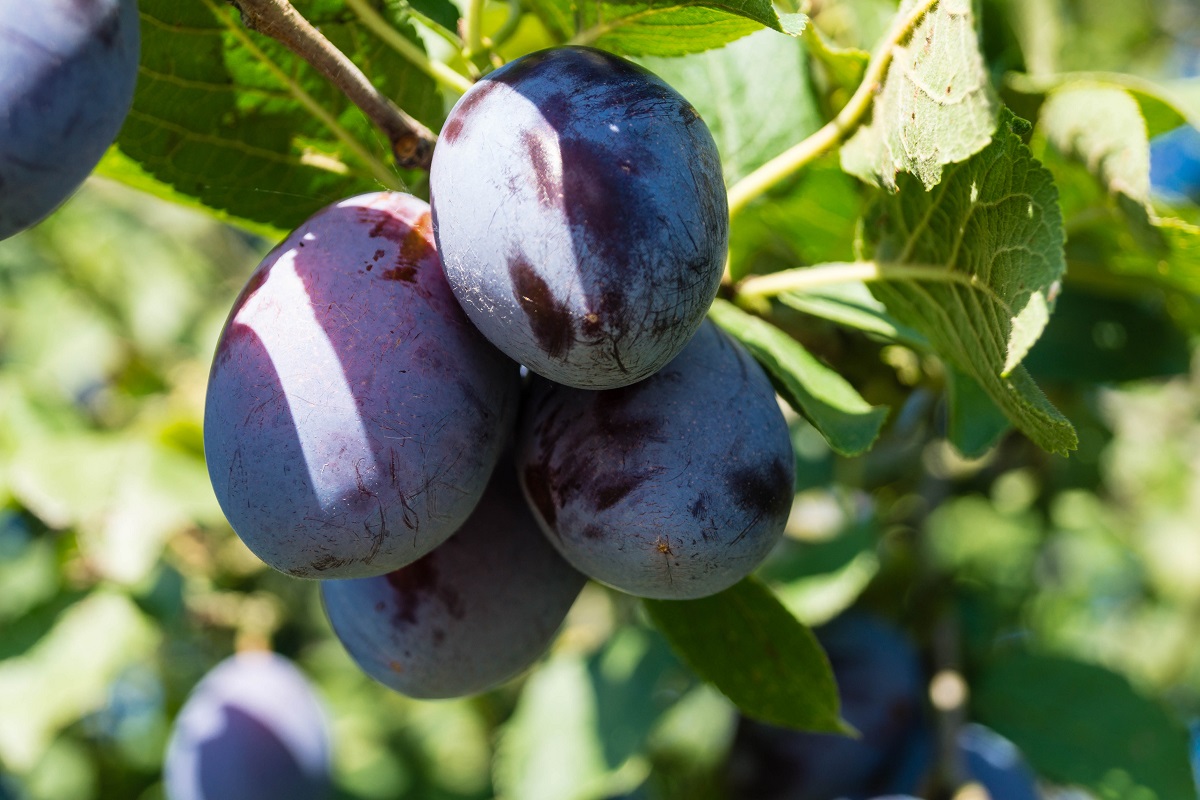
The Laxton delight tree is recognized for producing large and juicy yellow plums. Its fruit skin consists of the dusty and ashy appearance that most plums have; however, it is distinctly sweet in its rich flavor.
It is considered to be a reliable tree to grow ornamentally as it is reliable for producing fruit regularly as it is classed as a self-fertilizing tree.
9. Avalon Plum Tree
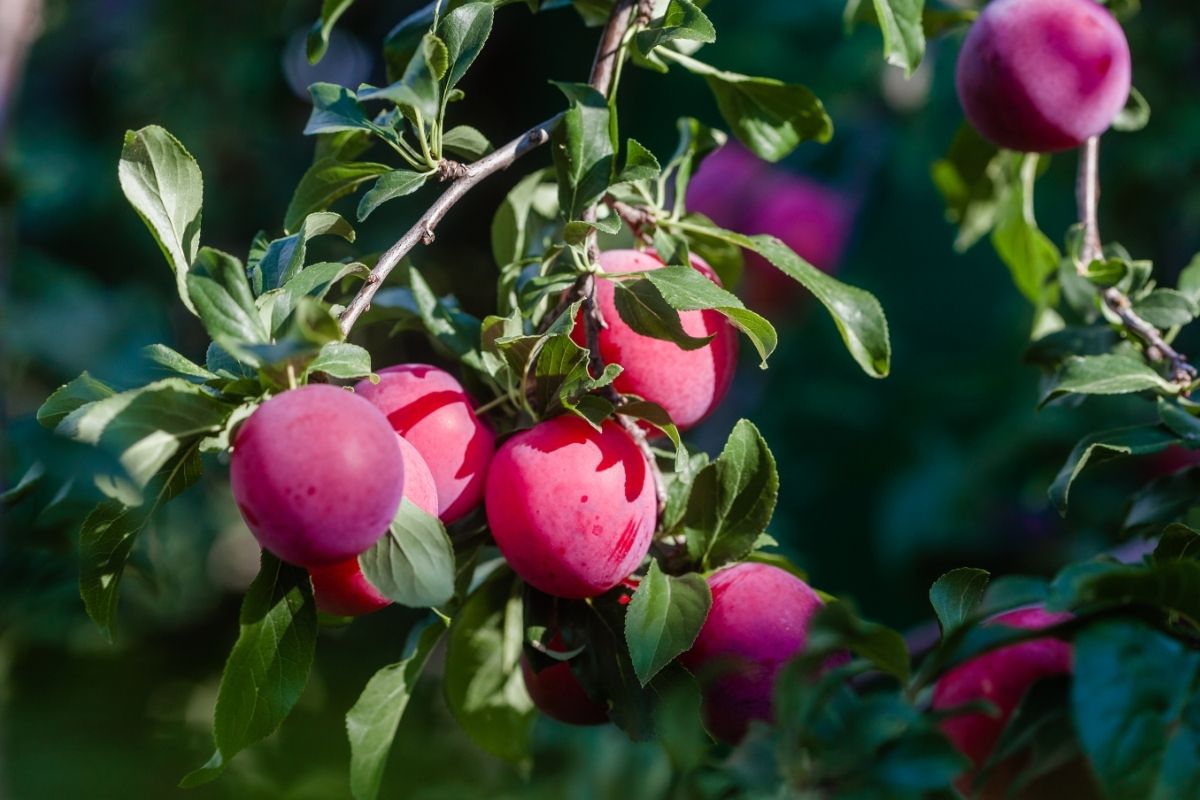
The Avalon plum tree is widely recognized as the common plum tree. The tree produces oval deep-red drupes known as plum fruit. This fruit from this tree is what many think of when they think of a plum with its red dusty skin, yellow-orange flesh, sweet and slightly sharp flavor.
Avalon plum trees are commonly planted in backyards for the fruit to be easily harvested. They are classified as partially self-fertilizing and relatively reliable crops.
10. Japanese Plum Tree
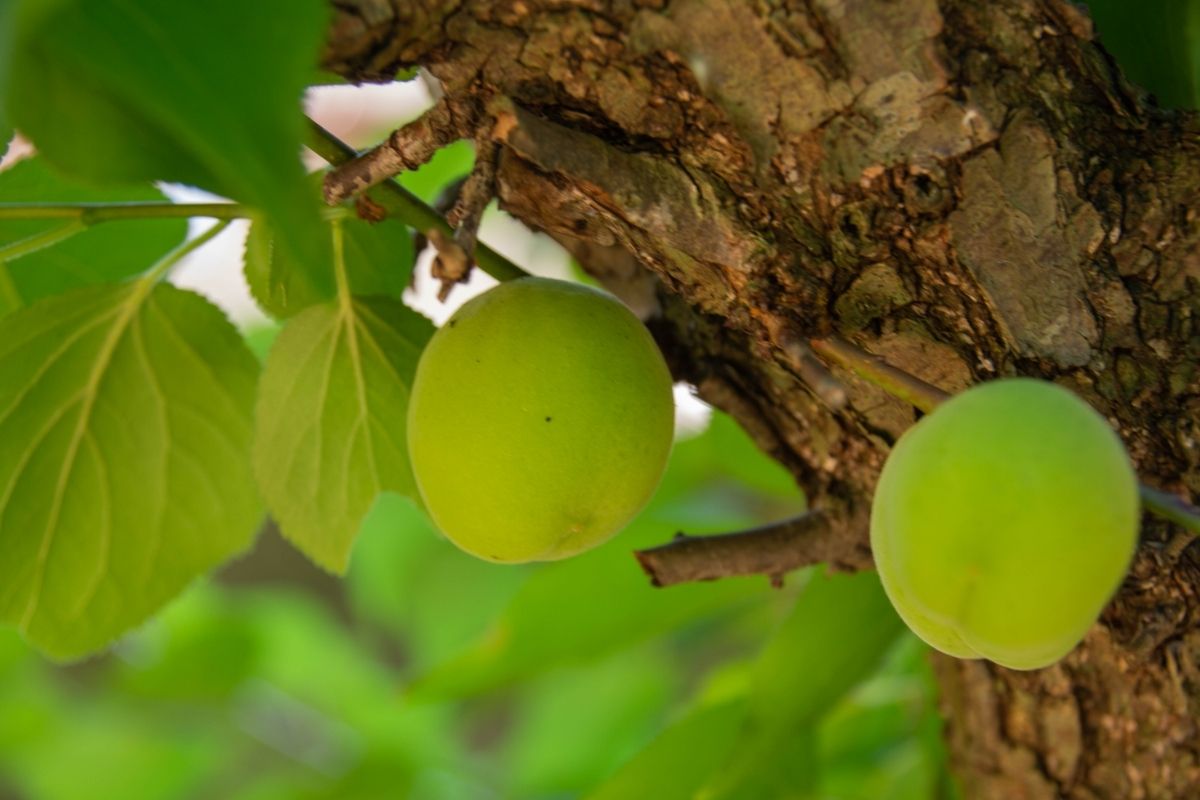
The Japanese plum tree is recognized for producing some of the juiciest plums in the world. Commonly known as the satsuma Japanese plum fruit, the fruit from this tree is exceptionally sweet and succulent.
Compared to European varieties of plums such as the damson plum, the Japanese plum is considered to be significantly larger and firmer but juicier. In comparison, the Japanese plum tree is also considered to be more delicate than its hardy family members.
Though called the Japanese plum tree, the tree actually originates from China, however, it was introduced to the USA via Japan.
11. American Wild Plum Tree
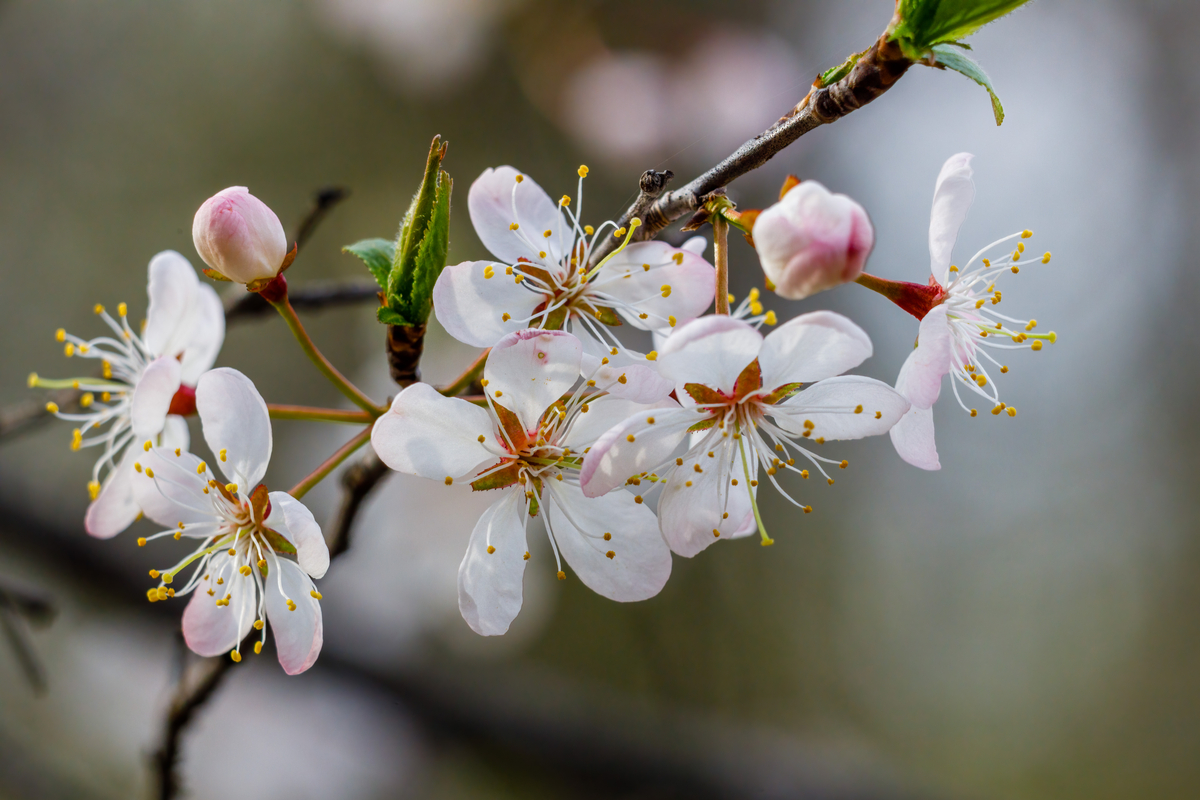
The American wild plum tree can be found growing in several regions across America from Massachusetts to Canada. This variety of tree is known for the abundant fruit it produces.
Thriving in wild and cold weather conditions, the American wild plum tree is said to grow effortlessly. This hardy tree is recognized for producing bright red, small, sweet, and juicy fruit.
12. Blackthorn Plum Tree
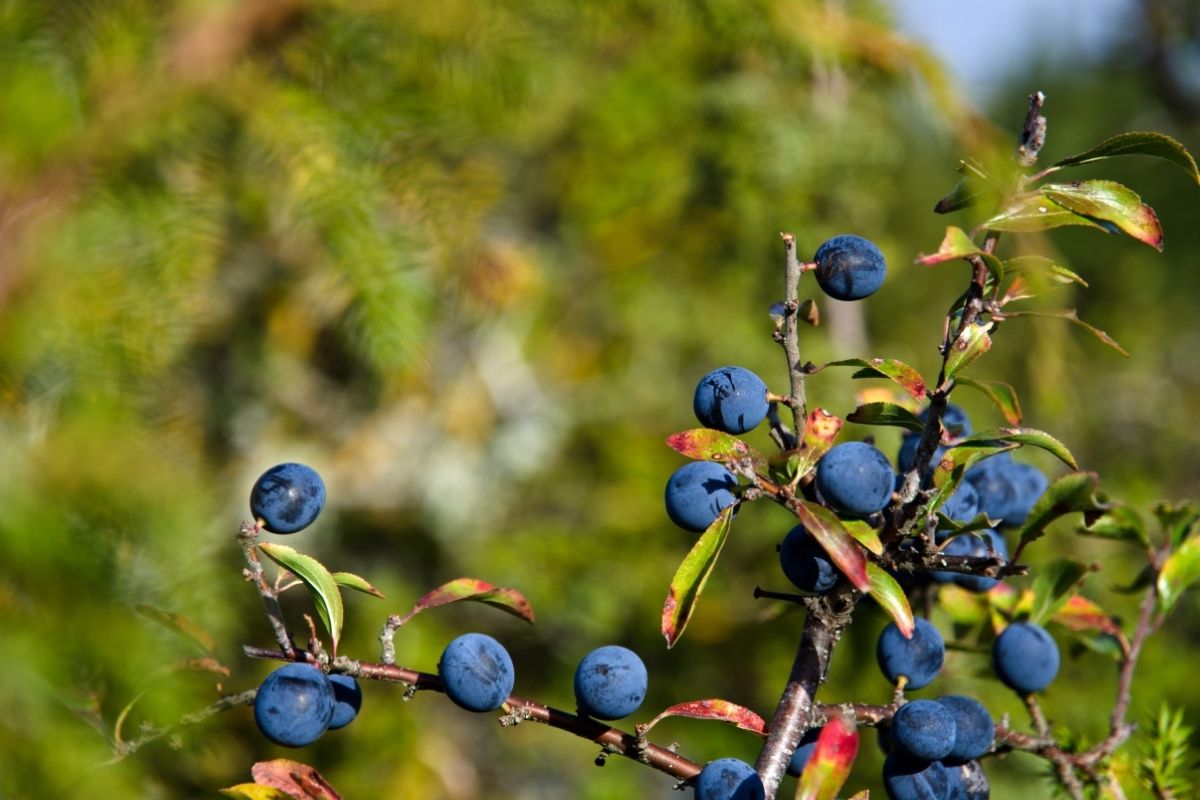
The blackthorn plum tree is native to several regions across Europe, the Middle East, and the Mediterranean. As its name suggests, the blackthorn plum tree is covered in small thorns.
Though thorny, the blackthorn plum tree is considered valuable as it is harvested for its fruit, its flowers, and its bark. The tree’s fruit provides a distinct floral sweetness that makes it ideal for culinary use, it’s flowers commonly used to make candy due to their scent and its bark is considered to be rich in tannin dye.
Additionally, the blackthorn plum tree is significantly hardy as it can thrive in a multitude of habitats and environments. It can be found growing in forestland, moist soil, fields, and even along coastlines.
13. Mexican Plum Tree
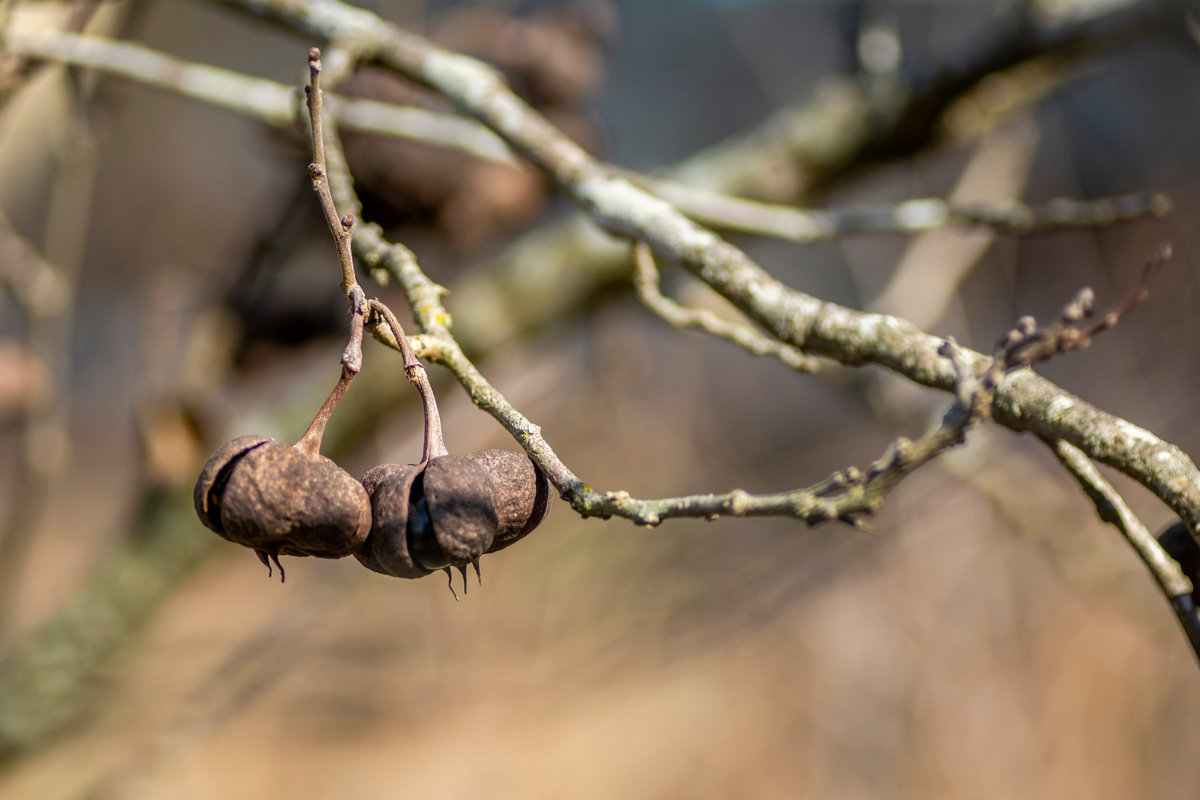
The Mexican plum tree is considered to be one of the largest plum trees commonly known as the big tree plum. This tree can grow to 35 ft tall. Not only recognized for its size but this plum tree is also known for the strong sweet and floral scent that it produces.
Native to Mexico as its name suggests, due to the sweet fruit the tree bears, the Mexican plum tree is widely cultivated and can be found all across America. Though this tree thrives in temperate climates, it is a versatile and adaptable tree that can thrive in a variety of soil types and weather conditions.
RELATED: La Naturaleza es Hermosa! 20 Different Types Of Mexican Trees
14. Flatwoods Tree
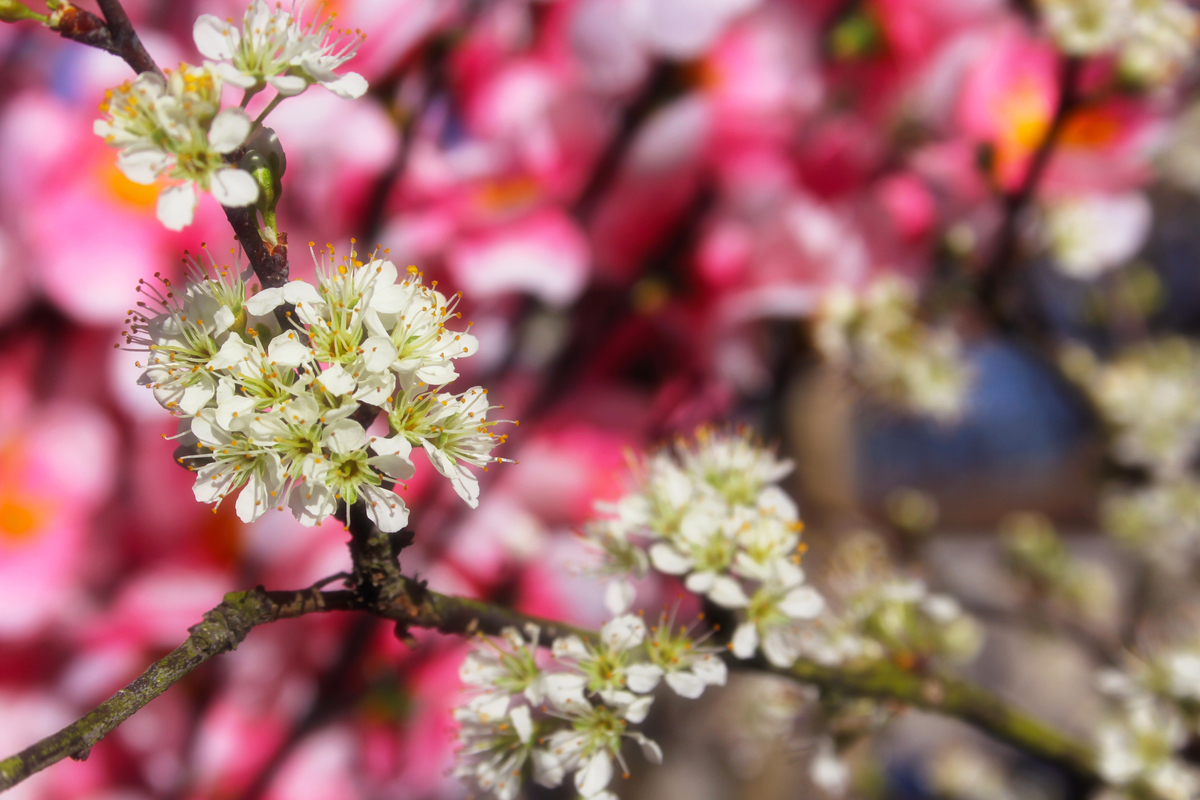
The flatwood plum tree is a unique variety of plum trees that differs significantly from many other plum trees. This tree, like many others, produces sweet and succulent fruit that is commonly referred to as sloe plums.
However, its fruit is produced significantly later than other plants as they are known to mature between August to October.
Additionally, this tree doesn’t fruit annually, instead, it bears fruit every 3-4 years. However, due to the distinct sweetness of the rich purple plums, they are considered to be worth the wait.
15. Chickasaw Plum Tree
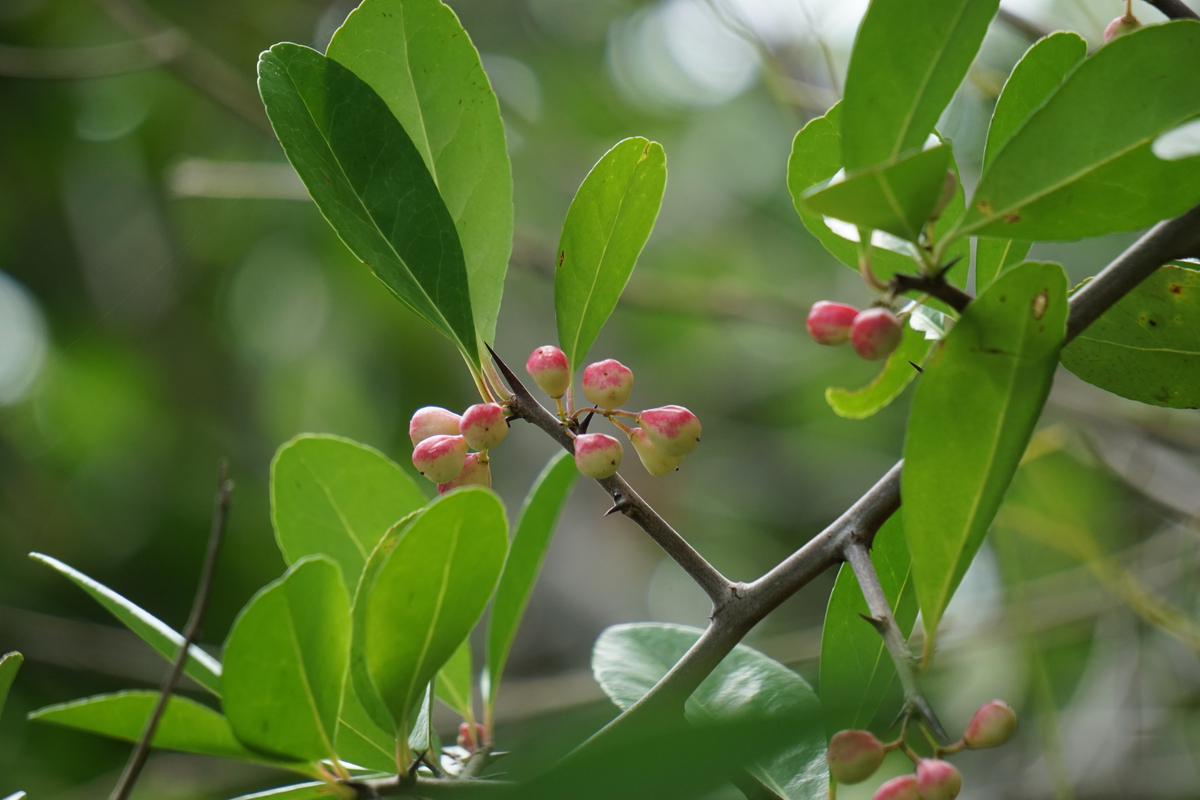
The chickasaw plum tree is a considerably messy tree with thickets and twisted branches all over the place. Classified as a cultivated tree, the chickasaw plum tree is recognized for the unique fruit it bears.
The tree produces small and tart cherry-like fruit that is commonly used for culinary purposes such as making jelly. This variation of the plum tree can mostly be found growing across America and can be found anywhere from woodland to roadsides and sandy soil.
Takeaway
Whether you’re looking to grow a plum tree yourself or you want to learn more about the variety of plums, we’ve shared a brilliant selection with you from green and indigo plums to giant and thorny plum trees.
With this glossary of plum trees, you can really see the diversity of the natural world and the richness it has to offer.







